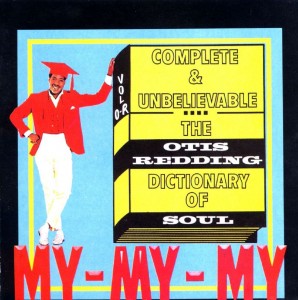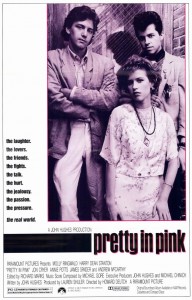 The Aut-O-Rama Twin Drive-In Theatre located in North Ridgeville, Ohio is like any drive-in you might imagine. One large parking lot with two giant screens and a snack bar and arcade building centrally located. There is a playground area for younger children and flea markets are held on the grounds every Sunday morning. Opened in 1965, I’m glad to say that the Aut-O-Rama is still independently owned and continues to screen double features throughout the summertime. During my formative years in the 1980s, my circle of friends had a pretty good routine: pile as many people into a car loaded with lawn chairs and a cooler, and pay for as few as people as possible, even hiding kids under blankets on the floor, in the hatchback or even the trunk. Cars parked to face the screen of the movie paid for, but that never prevented any of us from turning around and watching the other feature when bored. Once you tuned your AM radio to the special frequency that allowed you to hear the movie’s soundtrack, it was time to settle back in your semi-comfortable vinyl chair, or possibly the backseat of the car, open your beverage of choice and enjoy the show.
The Aut-O-Rama Twin Drive-In Theatre located in North Ridgeville, Ohio is like any drive-in you might imagine. One large parking lot with two giant screens and a snack bar and arcade building centrally located. There is a playground area for younger children and flea markets are held on the grounds every Sunday morning. Opened in 1965, I’m glad to say that the Aut-O-Rama is still independently owned and continues to screen double features throughout the summertime. During my formative years in the 1980s, my circle of friends had a pretty good routine: pile as many people into a car loaded with lawn chairs and a cooler, and pay for as few as people as possible, even hiding kids under blankets on the floor, in the hatchback or even the trunk. Cars parked to face the screen of the movie paid for, but that never prevented any of us from turning around and watching the other feature when bored. Once you tuned your AM radio to the special frequency that allowed you to hear the movie’s soundtrack, it was time to settle back in your semi-comfortable vinyl chair, or possibly the backseat of the car, open your beverage of choice and enjoy the show.
The delight of the drive-in was the social factor. Rare was the night when a group of teens actually watched the entire movie. No, you went to the Aut-O-Rama to hang with your friends, maybe score an illegal beer, and possibly try your first cigarette or Swisher Sweet. You also went to the Aut-O-Rama to wander the parking lot with that girl or boy you had a huge crush on and sit with them on the merry-go-round getting to know each other. If by some chance you were lucky, you kissed in the front seat, navigating the steering wheel and gear shift, or better yet, you moved to the back seat where hands could wander in the darkness and occasionally you peeked your eye open to see what was happening in the movie.
Back then the Aut-O-Rama ran second run movies back to back at a discount price. The managers often scheduled similarly themed flicks like Fletch backed with Beverly Hills Cop. Nothing better than a double dose of Harold Faltermeyer, eh? This is why I wound up watching two John Hughes penned romantic dramas, Pretty in Pink and its younger, less popular sibling Some Kind of Wonderful, on a pleasant summer’s evening.
 A small group of us had gone to the drive-in, mostly friends who had just graduated from high school. The girls, in particular, had no interest in a high school senior like me, so I didn’t have a chance in hell of sitting on the merry-go-round, navigating the steering wheel or winding up in the back seat. I was left with the movies. Released almost a year apart in 1986 and 1987 respectively and both directed by Howard Deutch, I originally saw both films with my on again/off again high school girlfriend (who had also just graduated). Looking up at Molly Ringwald pouting over Andrew McCarthy, Jon Cryer pining for Molly Ringwald and James Spader just being a prick, it was impossible not to reflect on the past three years I’d spent with my friends who were leaving town.
A small group of us had gone to the drive-in, mostly friends who had just graduated from high school. The girls, in particular, had no interest in a high school senior like me, so I didn’t have a chance in hell of sitting on the merry-go-round, navigating the steering wheel or winding up in the back seat. I was left with the movies. Released almost a year apart in 1986 and 1987 respectively and both directed by Howard Deutch, I originally saw both films with my on again/off again high school girlfriend (who had also just graduated). Looking up at Molly Ringwald pouting over Andrew McCarthy, Jon Cryer pining for Molly Ringwald and James Spader just being a prick, it was impossible not to reflect on the past three years I’d spent with my friends who were leaving town.
Of all of the Hughes films, Pretty in Pink had, by far, the best soundtrack. From the rerecorded Psychedelic Furs song from which the movie took its name to the classic OMD ballad, “If You Leave;” to the romanticism of Echo and the Bunnymen, to the funk/rock of INXS, the Pretty in Pink soundtrack had it all. However, one crucial song was left of the official release, a song that plays during one of the film’s most iconic scenes. You know what I’m talking about. It’s the moment that actually stopped all of the drive-in chatter and everyone turned to watch Cryer’s Duckie character lip sync and dance around Annie Pott’s record store while Ringwald’s Andie looked on, incredulous. Whether it was actually in Hughes script or Deutch’s decision (the two apparently worked closely on their three projects together, the third being The Great Outdoors), the decision to use Otis Redding’s rendition of “Try A Little Tenderness” turned a new generation on to Redding’s music. If you’re like me, you searched for that one song, discovered it on some cheap greatest hits cassette and suddenly you not only know “Try A little Tenderness,” but also “Mr. Pitiful,” “Love Man,” and “I’ve Been Loving You Too Long.” Only later did I learn that it appeared on his seminal 1966 album, The Otis Redding Dictionary of Soul: Complete & Unbelievable and that his backing band was the legendary Booker T. and the MG’s.
[kml_flashembed movie="http://www.youtube.com/v/mNGIg8f-0Wc" width="600" height="344" allowfullscreen="true" fvars="fs=1" /]
As my friends reminisced about the past and boasted about their futures, I stood back and observed them winding down their summer and essentially this chapter of their lives. When Some Kind of Wonderful began its late showing, I found myself half heartedly watching Eric Stoltz pouting over Lea Thompson, Mary Stuart Masterson pining for Eric Stoltz, and Craig Sheffer just being a prick. Suddenly it dawned on me. Artistic outcast from the wrong side of the tracks that falls for the upper-class kid trying to break away from the rich clique while sexually ambiguous best friend suffers a broken heart? Save for the role reversals, Some Kind of Wonderful and Pretty in Pink were the same movie!
me. Artistic outcast from the wrong side of the tracks that falls for the upper-class kid trying to break away from the rich clique while sexually ambiguous best friend suffers a broken heart? Save for the role reversals, Some Kind of Wonderful and Pretty in Pink were the same movie!
After the shock of my discovery wore off I laughed. It was brilliant. Hughes and Deutch were essentially showing how the type of story they were telling was universal, whether you were a boy, girl, or sexually ambiguous. I went to the drive-in thinking I was killing time and I came away appreciating Hughes just a little more.
Earlier this decade I was asked to write a teenage romantic comedy. “Something like a John Hughes movie” was all I was told. As my main character was a female teenage outcast, for the first time in over a decade I sat through Pretty in Pink. The film still holds up, although before I could get through the entire film, I had to skip ahead to Duckie’s dance because I was so anxious to see it again.
When Hughes passed away last week, I think his death resonated with so many of us because, to paraphrase Judd Apatow, a part of our adolescence died with him. Because Hughes gave up directing soon after the ’80s ended and he chose to disappear from Hollywood soon thereafter, it was like Hughes had grown up just like the rest of us and left his teen years behind. Some critics may not consider John Hughes one of the all time great directors, but I would argue that he documented the angst of suburban teens and adults with a concise and endearing eye for character and detail. His body of work will continue to influence new generations of writers and filmmakers wanting to honestly capture what its like to be a teenager. Just as important the music he chose to populate his films will continue to inspire teenagers of all ages to peek their eye open while making out at the drive-in to find out what that great song Duckie was dancing to in Pretty in Pink.

![Reblog this post [with Zemanta]](http://img.zemanta.com/reblog_e.png?x-id=65f21868-762b-4be2-92a9-97792ea534fe)



Comments